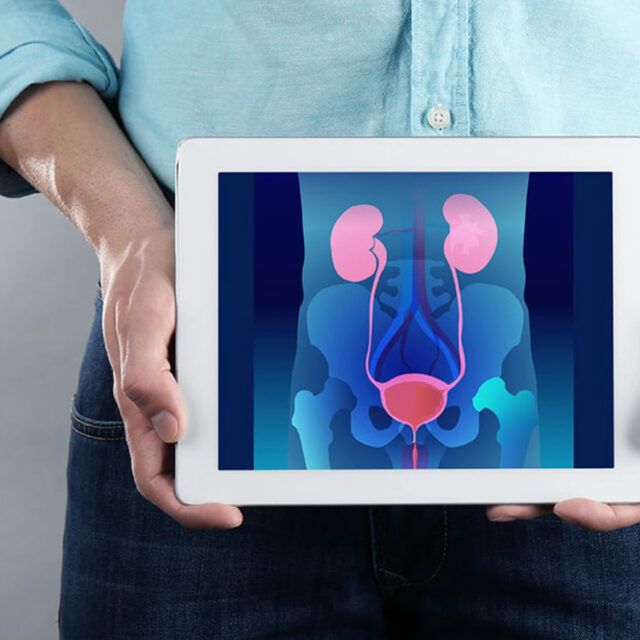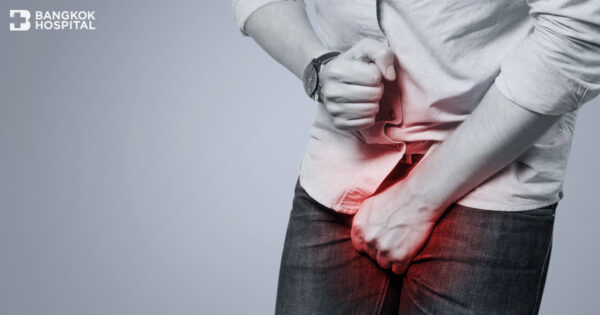As one ages, the hormone production in the body slowly declines. Even in men, when their bodies and emotions begin to change – in a similar manner to women in mental pause. For many Thai men, prostate abnormality should not be overlooked. Ranked first at 80% are cases related to the prostates. This is followed by prostate cancer, at 18%. And at 2% are prostatitis cases. Therefore, it is vital to become aware of any abnormality and seek treatments quickly, to help alleviate the symptom.
Understanding Enlarged Prostate Disease
Enlarged prostate or Benign Prostate Hyperplasia (BPH) is a condition when a man’s prostate, which is just below the bladder and surrounds the urethra, has become abnormally large and compresses the urethra – making it narrower. This condition is generally found among men 45 years and older, especially those who are 80 or more – where as much as 80% has been detected.
Warning Signs
From the medical point of view, it is how a patient passes urine is of greater significance than the prostate’s size. Observed symptoms are as follows:
- Difficulty passing urine (dysuria)
- Frequent urination, especially at night
- Inability to hold urine, or difficulty starting urination
- Weak urine stream or a stream that stops and starts, dribbling at the end of urination, inability to completely empty the bladder
- Acute anuria (inability to pass urine)
- Severe urge to urinate
Diagnosis
Examination and diagnosis procedures are as follows:
- Medical history and symptoms check.
- Blood test, urine test, and urinary flow test.
- Determine the size of prostate with ultrasound.
- Manually feel the prostate through the rectum, also known as Digital Rectal Examination (DRE), to check for any abnormality.
Treatments for Enlarged Prostate
Treatments for enlarged prostate are categorized below:
- Treatment with medication to relax muscle fibers in the prostate. Alpha blockers are used in this case, to inhibit the production of male 5-alpha reductase hormone which has effects on the prostate. The medical team will prescribe this treatment according to the symptoms.
- A popular treatment is a minimally invasive or surgical therapy. This requires medical specialist and is performed by inserting a small scope into the urethra. There are 2 types of surgical therapy:
- Transurethral Resection of the Prostate (TURP). A small scope is inserted into the urethra, and the surgeon removes the wall of the prostate or cut it into small pieces with a monopolar electrode that makes incisions and block any bleeding at the same time.
- Transurethral Vaporized-Resection of the Prostate (TURPV) or Plasma Kinetic (PK). In this case, the surgeon uses a bipolar electrode to vaporize the tissue. This technique is effective in preserving the surrounding areas from being charred by the current.
- Photo-Selective Vaporization of Prostate (PVP) or Green Light PVP. This is the latest innovation in enlarged prostate treatment. The technique involves inserting a small scope into the urethra – similarly to the other types of prostate surgeries – but now a high-energy laser is used to remove tissue that is blocking the urethra. The laser beam will gently vaporize the tissue, resulting in less bleeding. This method is suitable for seniors or people who cannot suspend blood thinner medication.
- Thulium Laser Vaporesection of the Prostate. This technique is as effective as PVP. The difference is that this method cuts the blocking tissue in the urethra into tiny pieces which are then kept for further examination, in case the patient has a high risk of prostate cancer. It can also be used for treating urethral stricture.
Possible Complications If Left Untreated
- Cystitis (urinary tract infection)
- Blood in the urine because of the swollen prostate
- Chronic kidney disease or kidney failure
Clearly, enlarged prostate is something men should not overlook. Apart from regularly noting how urine is passed, it is recommended that men consult a specialist from the age of 45 onward, to screen for and prevent or receive an early treatment of this disease.








